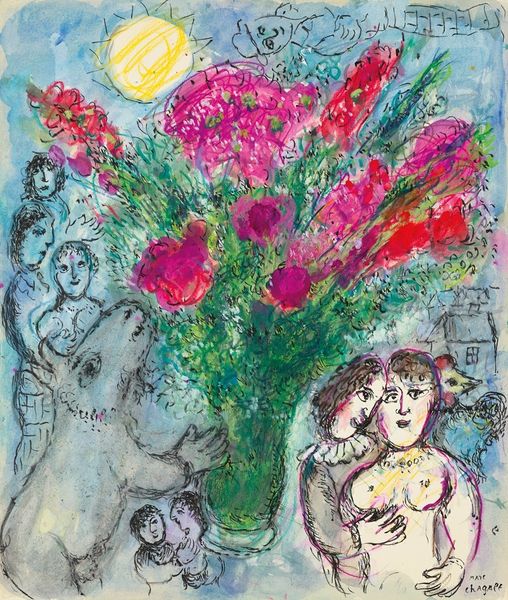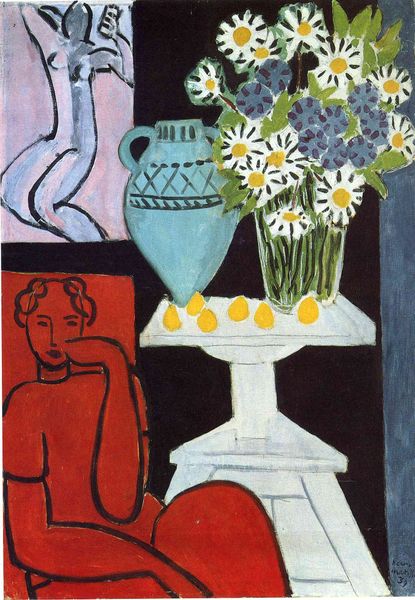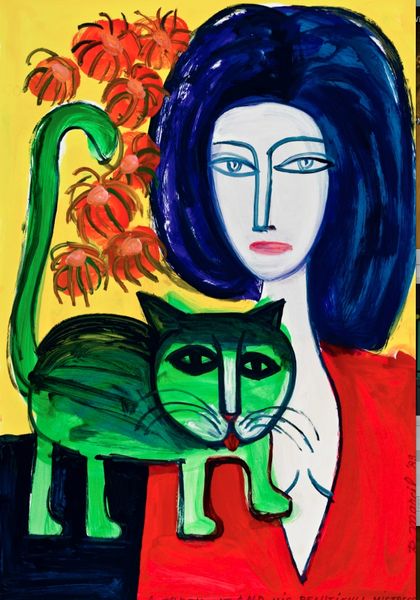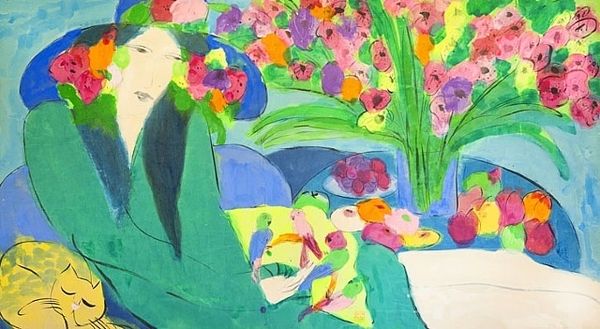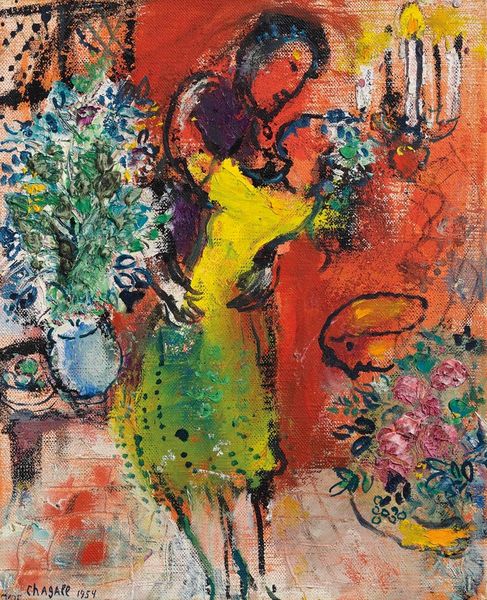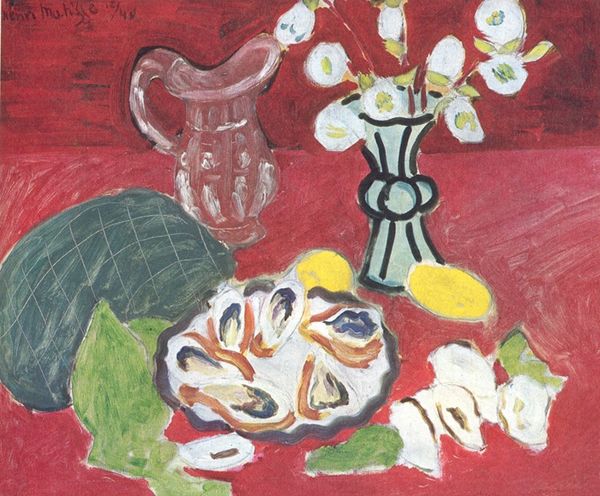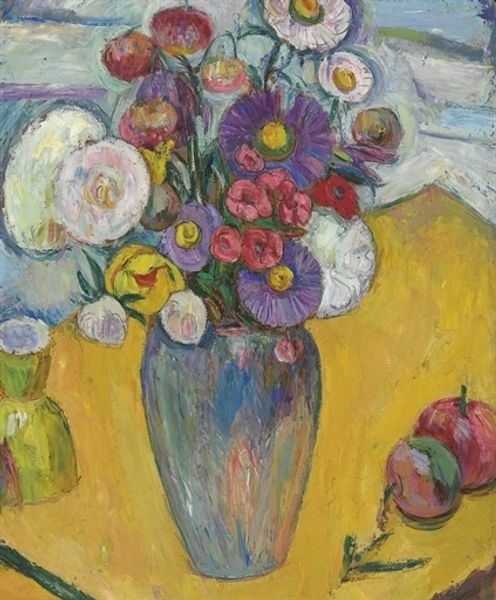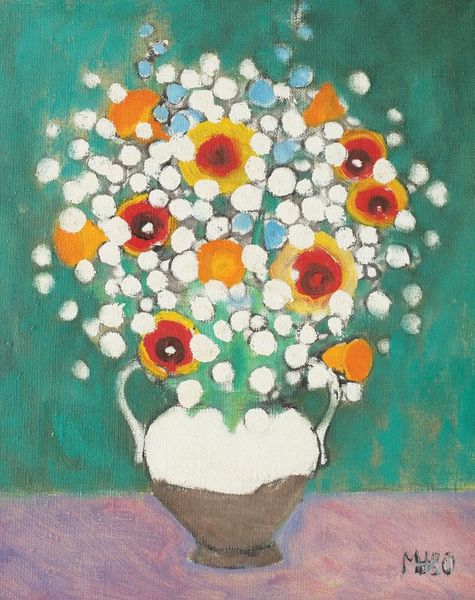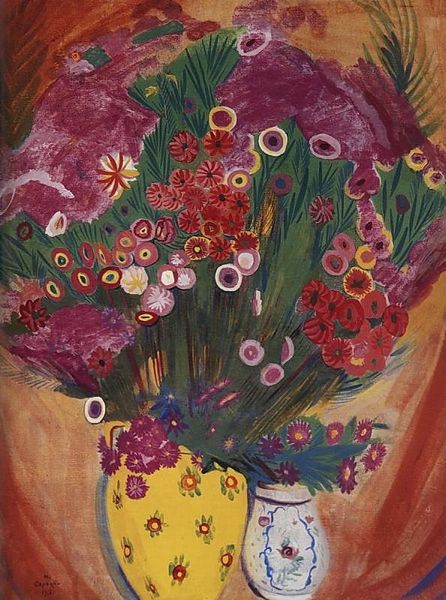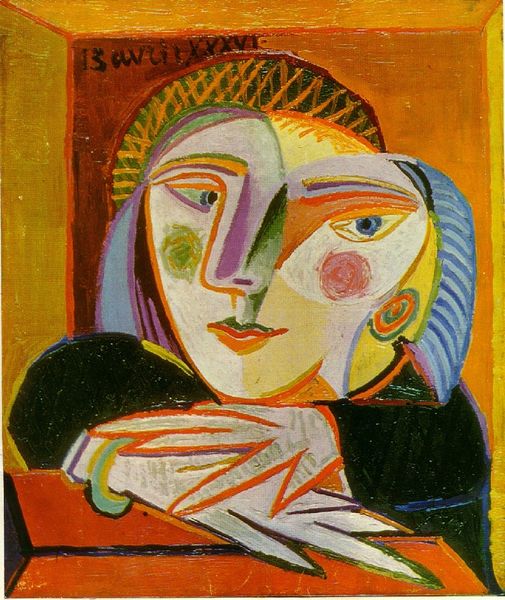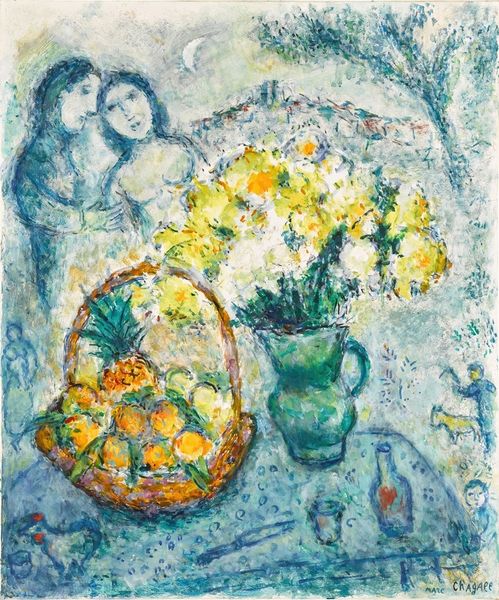
Copyright: Modern Artists: Artvee
Curator: We’re looking at Henri Matisse’s "Jeune fille aux anemones sur fond violet," painted in 1944. It’s an oil on canvas. Editor: It strikes me as quite melancholic, despite the bright palette. There’s a sense of stillness, almost resignation in the young woman’s face. The abundance of flowers almost feels like a mask, or perhaps an attempt to brighten her environment during a dark time. Curator: Indeed. It was created during World War II, when Matisse was living in Southern France under German occupation. He simplifies forms, emphasizing the interplay of color and pattern. Intimacy in interiors really captivated his artistic practice, and the anemones contrast sharply against the overall flat purple background. This painting is often interpreted as reflecting both personal resilience and broader socio-political anxieties. Editor: It’s interesting to consider how this fits within the Fauvist movement. The emotional use of color, pushing beyond representational accuracy, is powerful. You have that vibrant red fighting against the dominating violet, for instance, the woman seeming distant yet grounded at the same time. The stylization hints towards the naive art and the complex interweaving of figure, fabric, flowers, vases creates an interplay that, when we examine the wartime environment it was created within, expresses his inner, complex feelings. Curator: Absolutely. One thing that stands out is how Matisse employs this flatness in the painting. It challenges traditional notions of depth and perspective. This emphasizes the decorative nature of the composition and shows us his dedication to exploring purely visual experiences. It wasn't just about creating a likeness of a girl with flowers, it became about arranging color and shapes to evoke an emotion and reflect the historical moment. Editor: Considering the sociopolitical context of its creation certainly casts new light on those visual strategies. By focusing on the intimate, perhaps even domestic scenes, Matisse might be seen as subtly resisting the pervasive despair of the war era by illustrating small glimpses of comfort. The beauty in the everyday which resists. Curator: It also presents some complexities of artistic choices made under duress; we need to think of it through social factors while evaluating the impact. Editor: Thinking through those complexities offers new depths in decoding how these seemingly simple flowers become emblems of strength, endurance, and perhaps hope, crafted from the palette of historical adversity.
Comments
No comments
Be the first to comment and join the conversation on the ultimate creative platform.
